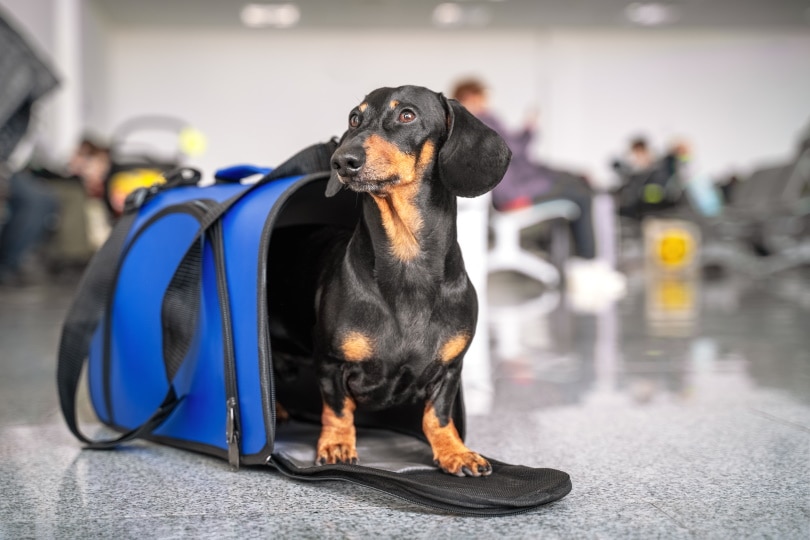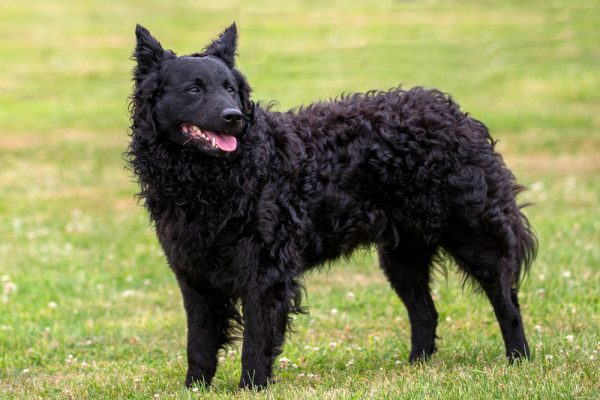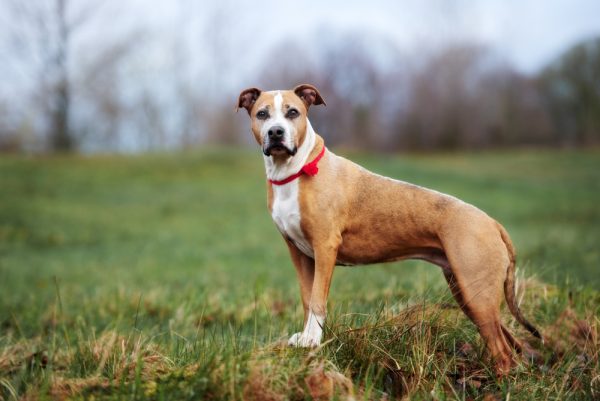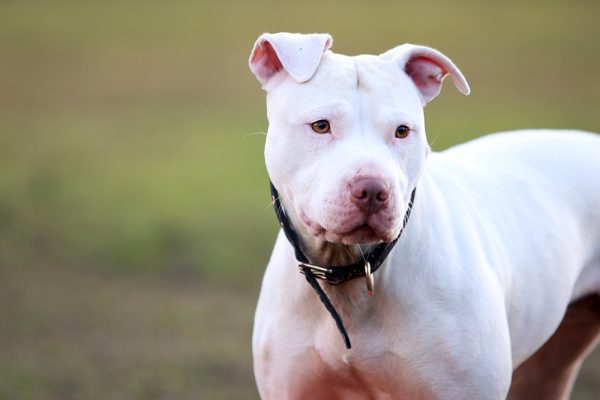There are certain situations where flying with your dog is a must, such as moving home or for a long trip away. Still, in every situation, you should always consider your dog’s feelings, and this is especially true when dealing with your pup’s stress on a flight, as it turns out that flying can be very stressful for dogs.
There is no one-size-fits-all approach to managing their stress, and it’s safe to assume that unless your dog is a frequent flier, he or she will experience some stress in one form or another at different times during the flight.
Some dogs that aren’t used to traveling, haven’t been in a crate, or are nervous may have a tough time acclimatizing to being in a crate, in the cargo hold, or under a seat in the cabin.
Imagine you were a dog placed into a small, dark crate and put into a loud, bumpy space with the smells of unfamiliar people, other dogs, and other scents you don’t recognize. You’d be stressed and nervous, too! However, there are many things we can do as owners to help alleviate this stress and make each journey much more pleasant.

The 5 Ways You Can Reduce Stress for Dogs When They Are Flying
There are several methods that you can use to help reduce your dog’s stress when flying. Everything from being prepared to using sedation has been used in the past.
However, studies have shown that sedation may not work to reduce stress in dogs when flying, and many airlines have restrictions on sedation as it can actually cause more problems than it solves, so it is often best to employ other methods when your dog has to travel1.
1. Be Prepared
Having everything you need for your and your pup’s departure will make the entire trip much more streamlined. Making sure your dog has all the required vaccinations and health passports will make the days and weeks leading up to your trip much less frantic, meaning you can use this time to prepare your dog for his flight.
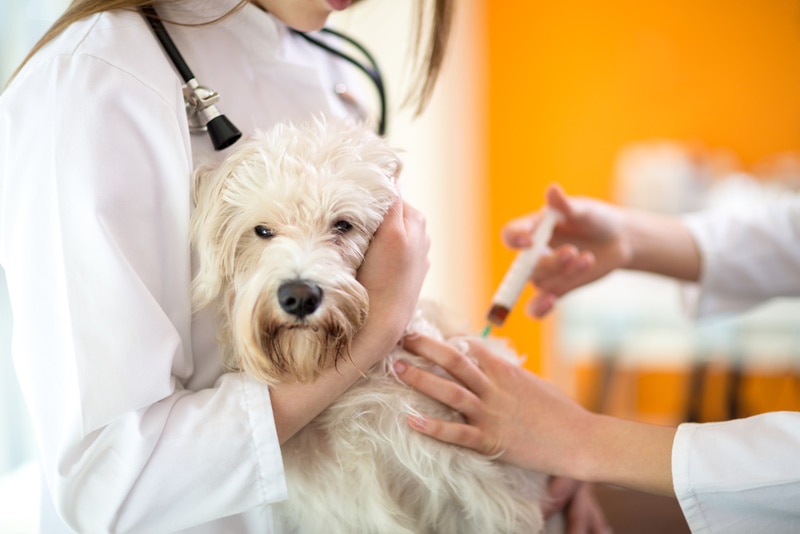
2. Restrict Food
While water should never be restricted and freely available at all times, giving your dog a light meal a few hours before your flight can help settle them and reduce the risk of them vomiting.
Dogs (just like humans) can get travel sickness, and if stressed, dogs can vomit. Because they have to stay in their crates even if it happens, it’s best to try to avoid it as much as you can.
3. Use Calming Products
There are calming aid products available to help your dog feel comforted and help relieve their stress that you can buy before you depart. Products such as Adaptil Pheromone Sprays mimic dog-appeasing pheromones that will calm your dog while they’re traveling by helping them to feel safe, happy, and content.
These pheromones are also available in collar form, so if your dog wears a collar, it will be able to receive a constant stream of the pheromones while in their crate.
Other products contain natural ingredients that can help to soothe your dog before and during travel. Vets Best Comfort Calm tablets contain Valerian, which is an herb that’s well known for its calming effects.
As with any medications, consult a veterinarian before you give any supplements or vitamins.
We suggest booking a call with an online vet for advice, to save yourself and your pooch the stress of an in-clinic vet visit.
If you need to speak with a vet but can't get to one, head over to PangoVet. It's our online service where you can talk to a vet online and get the advice you need for your dog — all at an affordable price!
4. Get Your Dog Used to Airline-Certified Crates
A crate for a dog should be a warm, safe, and private place for them to have some space and decompress. If your dog sees their crate as a haven where they can sleep and play with their favorite toys, introducing a new airline-certified crate to them should be fairly simple, and the earlier you can do this, the better for your pup to give them time to acclimatize.
If your dog is not used to crates or sees the crate as a form of punishment, it will be a lot more complicated. Introduce your dog to their new crate in a positive way, encouraging (but never forcing) them to go into it and praising them with a treat when they do.
Using a worn item of clothing of yours alongside one of your dog’s favorite soft toys can help provide familiar, comforting smells into the crate, and these items can also be included in the crate when they fly.
Try to allow your dog as much time in the crate as they want, periodically closing the door and then re-opening it, so they know that the door closing doesn’t mean anything bad will happen. If these steps are taken, your dog’s stress as they travel in their crate can be significantly reduced since the crate is now a safe and comfortable space.
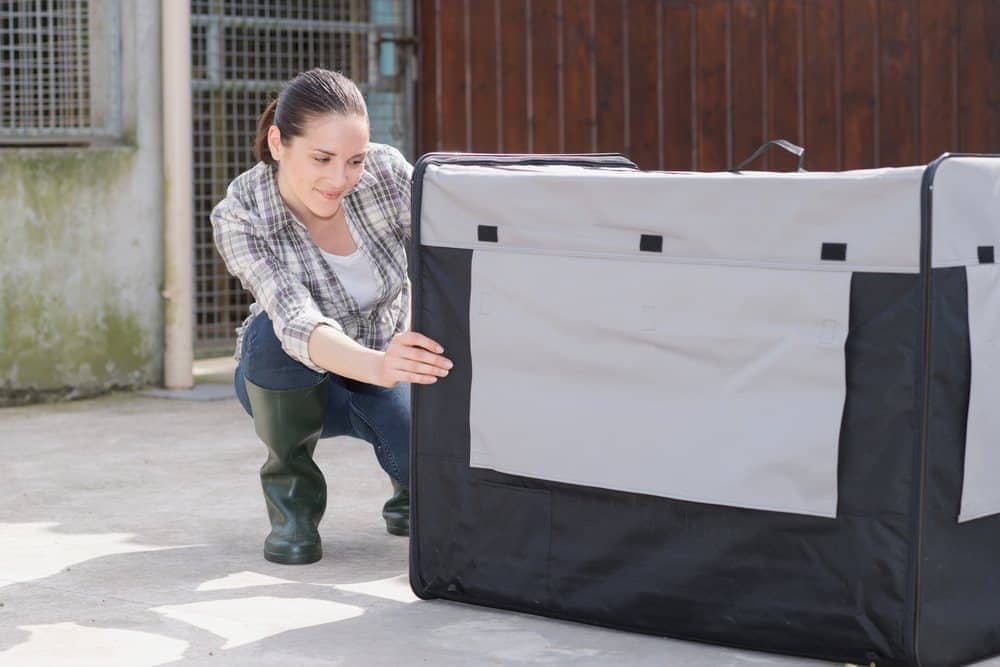
5. Stay Calm
Dogs are intelligent creatures and can tell when people are stressed, but they can’t exactly discern why. This makes them more stressed and anxious, leading to a negative loop and a stressed-out canine.
Keeping yourself calm and being quiet and reassuring can help to de-stress your dog and keep them relaxed before and during your flight.

Is It Safe for Dogs to Fly in Planes?
There are certain breeds of dogs that flying is, unfortunately, riskier for, such as brachycephalic breeds (breeds with short muzzles like pugs and bulldogs) as well as large dogs because they can’t travel in the cabin with you. They’ll have to travel in the cargo hold.
If traveling with a small dog, they should be able to travel with you in the cabin in a crate (for a fee). However, airlines have restrictions on the size and number of dogs that are allowed in the cabin. Unfortunately, there are stories of pets being injured or even killed while traveling in the cargo hold of an airplane, in spite of the fact that most pets are okay for the duration of their flight.
In 2021, the U.S. Department of Transport received 21 reports of trauma or death from airline-transported animals, despite 256,114 animals being flown in the US in 2021, so this somber event doesn’t happen often.
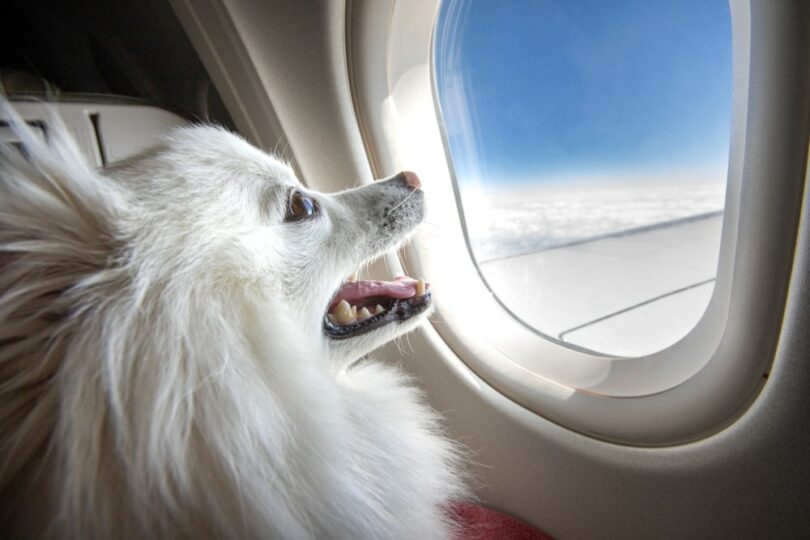

Conclusion
Traveling with your dog can be a hugely rewarding experience for you both, plus it’s lots of fun getting to explore new places with your pup. There are, however, some downsides, especially when it comes to airplane travel, as dogs can get very stressed and can even be hurt during the flight.
However, there are safer options for traveling with your dog, which is not only less stressful for them (and you) but likely won’t cause them any harm, and in some cases, may even be enjoyable.
See also:
Featured Image Credit: Masarik, Shutterstock
